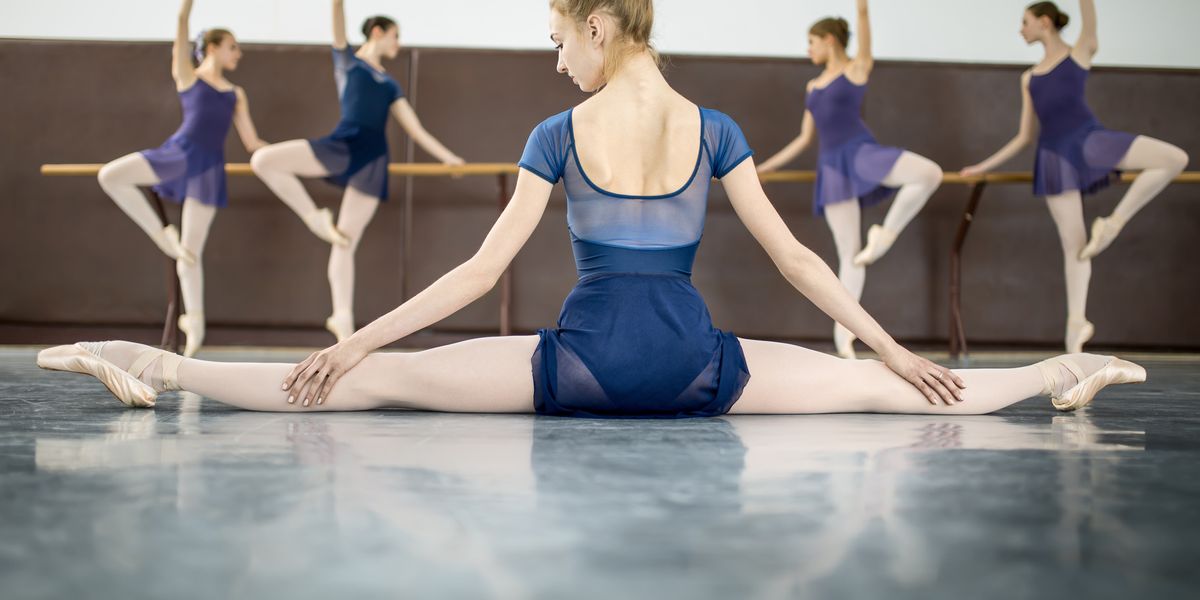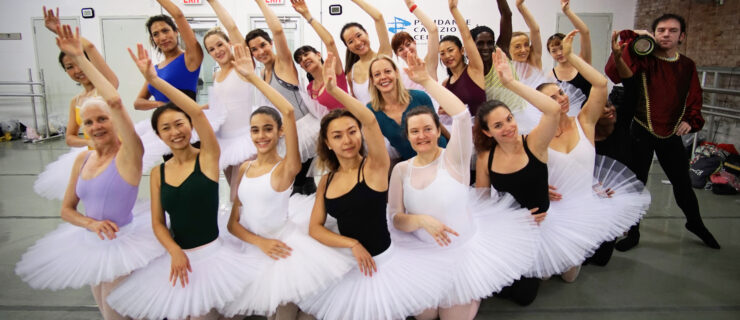Moving On: How to Talk to Your Teachers About Leaving Your Studio
By the time Pittsburgh Ballet Theatre soloist Gabrielle Thurlow reached high school, she knew she wanted to pursue a professional ballet career. But to do so, she had to make the tough decision to leave her local studio in Buffalo, New York, to train at Pittsburgh Ballet Theatre School. “I wanted a school attached to a professional company, where I could train full-time,” she says. With her parents’ support, she approached her teachers a year in advance to begin talking to them about leaving. “It’s a difficult conversation to have,” she says. “They trained me, and we had this special relationship. But as former professional dancers, they understood where I was coming from.”
Dancers often face this decision as they plan their pre-professional training. They are forever indebted to the teachers who molded them, and broaching the subject of leaving can seem like an impossible conversation. While it’s normal to be nervous, there are ways to sensitively navigate the situation, without burning any bridges.
 Gabrielle Thurlow, shown here in “Le Corsaire,” started talking to her teachers about leaving a year in advance. Photo by Rich Lofranko, Courtesy Pittsburgh Ballet Theatre.
Gabrielle Thurlow, shown here in “Le Corsaire,” started talking to her teachers about leaving a year in advance. Photo by Rich Lofranko, Courtesy Pittsburgh Ballet Theatre.
The Decision
Many dancers decide to switch schools when they feel they’ve outgrown their current studio. A student at the top of her class may seek the competition of more advanced dancers, or the finishing touch of a fresh perspective. Others want to study a specific technique, such as Vaganova or Balanchine. For Thurlow, there was an additional, strictly practical reason for changing studios. “There weren’t enough boys at my school in Buffalo, and I struggled with partnering at summer programs,” she says.
The appeal of full-time pre-professional programs is another common motivator. For Los Angeles Ballet principal Julia Cinquemani, who began her training at a studio in Dallas, a company-affiliated program was key. “The most effective way to get into a company is to go to a school connected to a big one,” she says. At the end of a summer at School of American Ballet, when Cinquemani was 16, faculty co-chairman Kay Mazzo suggested Pacific Northwest Ballet School as a potential year-round home.
A less-than-attentive instructor or negative student-teacher relationship can also push a dancer to leave her studio. However, Darla Hoover, artistic director of Ballet Academy East in New York City, finds most students audition for her school at their prior teachers’ urging. “Teachers are sensitive to students’ needs, and they’re realistic about how much they can offer,” she says.
 Ballet Academy East faculty member Jenna Lavin with advanced student Mary Watters. Photo by Jennifer Davidson, Courtesy BAE.
Ballet Academy East faculty member Jenna Lavin with advanced student Mary Watters. Photo by Jennifer Davidson, Courtesy BAE.
The Conversation
For Cinquemani, an open and honest relationship with her teachers facilitated the dreaded talk. “It was such a gradual process,” Cinquemani says. “We would meet at the beginning of each school year to go over the summer and discuss my goals for the coming year.” Thus, when the time came, she had a natural opportunity to raise the possibility of auditioning for PNB’s school.
However, not every student leaves her school with a teacher’s initial blessing. “It’s going to be an awkward conversation, but own up to that,” Hoover says. “Be respectful and let them know that, while they’ve given you so much, you have an urge for more growth.”
Thurlow recommends focusing the conversation on what you need, rather than on what the studio isn’t giving you. “Talk about the things that are outside your teacher’s control, and emphasize that it isn’t a flaw of the school,” she says.
Hoover agrees that, while it’s good to be open with your teacher, you should be respectfully honest rather than air a list of grievances. “If you come home from class every night furious at your teacher, this is not the time to tell her,” she says.
Finally, timing is crucial. Hoover recommends that dancers who plan to change schools at the beginning of the school year initiate the conversation in June. “It’s disrespectful to just not show up in the fall,” she says. For students requiring a midyear switch, she urges dancers to be mindful of any prior commitments. “If they’re counting on you for any upcoming productions, don’t leave them in a lurch,” says Hoover.
“Your first teacher planted the seed within you to passionately pursue this profession, and that’s a big gift.” —Darla Hoover
The Response
While it is impossible to predict a teacher’s reaction, most are supportive. When Cinquemani returned from SAB and informed her teacher of Mazzo’s suggestion, her response was more than positive. “She said, ‘Okay, let’s get you an audition at PNB,’ made the call, and the next day, we flew out to Seattle together,” Cinquemani says.
Thurlow’s teachers were similarly proactive. “Even though they knew a year in advance, they didn’t start ignoring me or denying me corrections,” she says. In fact, knowing that Thurlow would be representing their school at PBT, they pushed her even harder.
In rare occasions, a teacher might feel offended, finding it difficult to view things from the student’s perspective. This may stem from possessiveness, or a sense of lost investment in a dancer. “In these situations, I fully encourage students to keep their cool, and act older than their age,” Hoover says. She recommends a respectful “I’m sorry you feel that way,” followed by the assurance that you will remain indebted to them as you move on. “The dance world is small! Always conduct yourself with integrity, and don’t leave any baggage behind you,” she says.
 For Julia Cinquemani, shown here with Kenta Shimizu in “Don Quixote,” an open and honest relationship with her teachers facilitated the dreaded talk. by Reed Hutchinson, Courtesy Los Angeles Ballet.
For Julia Cinquemani, shown here with Kenta Shimizu in “Don Quixote,” an open and honest relationship with her teachers facilitated the dreaded talk. by Reed Hutchinson, Courtesy Los Angeles Ballet.
Staying in Touch
While leaving a beloved childhood studio can be difficult, you don’t necessarily have to sever ties. Thurlow regularly exchanges emails with her teachers in Buffalo, who enjoy tracking her professional developments. Cinquemani also keeps in touch with her school and was recently invited to dance Sugar Plum for its 30th-anniversary Nutcracker. “It was truly a full-circle moment for me,” she says.
Hoover stresses that most teachers like hearing from their former students, and that their ability to help you extends beyond the studio. “When you get out in the professional world, you’re going to need us more than ever,” she says. “Remember that we’re there to help you navigate the waters.”






